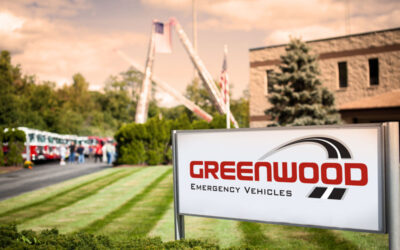The Seiverville (TN) Fire Department has had a lot of success using compressed air foam systems (CAFS) and rear-mount pumpers, so when it came time to replace an aging pumper, the truck committee wanted to have a similar vehicle built.
After considering proposals from four fire apparatus manufacturers, Seiverville chose KME to build a custom rear-mount CAFS rescue-pumper.
“KME did some things on the Predator chassis that couldn’t be done on [other] chassis,” says Fred Atchley, Seiverville’s battalion chief. “One of the big things we wanted was to have the rear-facing crew cab seats eliminated and replaced by a very large dual emergency medical services (EMS) cabinet. That medical cabinet was made accessible from both inside the cab and through exterior doors on each side of the vehicle. And, we wanted as much space as possible on the shortest wheelbase for the size pump and water that we wanted, so we went with the extended cab model.”
More Water, Storage
Adam Terry, apparatus salesman for KME, says that Seiverville wanted to carry more water than it had on its other pumpers, which was 750 gallons, “so KME was able to give them a 920-gallon water tank plus a 30-gallon foam cell. We took the existing design and stayed with the same wheelbase and overall length but were able to get more water and foam on the chassis for them. In addition to the EMS compartment in the cab, the department wanted to carry as much equipment on the rig as possible, especially because of the hilly terrain they have, with a lot of narrow mountain roads.”
Mark Kopunek, product manager for KME, says the resulting custom rescue-pumper uses KME’s rescue body to maximize compartment space with full height and full depth compartments on both sides of the vehicle, while the rear-mount design and its pump panel minimize compartment space used by that equipment. “The pump panel controls are located in the rear compartment on the officer’s side of the rescue-pumper,” Kopunek points out.
Pump Location
Atchley says that with the pump panel on the right rear corner of the vehicle, “we can position the pumper so the operator is able to see the fire and still be protected from being exposed on the street side of the pumper.” He adds that while the medical cabinet in the cab displaced two firefighter seats, KME added two fold-down nonself-contained breathing apparatus (SCBA) seats, one on each side of the two SCBA-equipped forward-facing firefighter seats.
“Having a rear-mount pumper with the pump and pump panel at the back part of the truck frees up a lot of room on the pumper and gives us a lot of extra compartment space,” Atchley points out. “The rescue-pumper has a transverse compartment where a side-mount pump panel would be, where we store our Stokes basket, backboards, and forcible entry tools.”
Six discharges on the rescue-pumper are foam-capable, Kopunek notes. Three preconnects are located at the middle of the pumper’s body (two 1¾-inch speedlays holding 200 feet of hose each and a 2½-inch speedlay holding 200 feet of hose, all three in roll-out trays), a front discharge for 150 feet of 1¾-inch hose, and two 2½-inch rear discharges. The vehicle also has a four-inch water-only discharge at the rear, as well as a Task Force Tips Blitzfire monitor connected to one of the 2½-inch rear preconnects.
For the full article, visit KME Builds Custom CAFS Rear-Mount Rescue-Pumper for Seiverville (TN) Fire Department
ALAN M. PETRILLO is a Tucson, Arizona-based journalist, the author of three novels and five nonfiction books, and a member of the Fire Apparatus & Emergency Equipment Editorial Advisory Board. He served 22 years with the Verdoy (NY) Fire Department, including in the position of chief.







